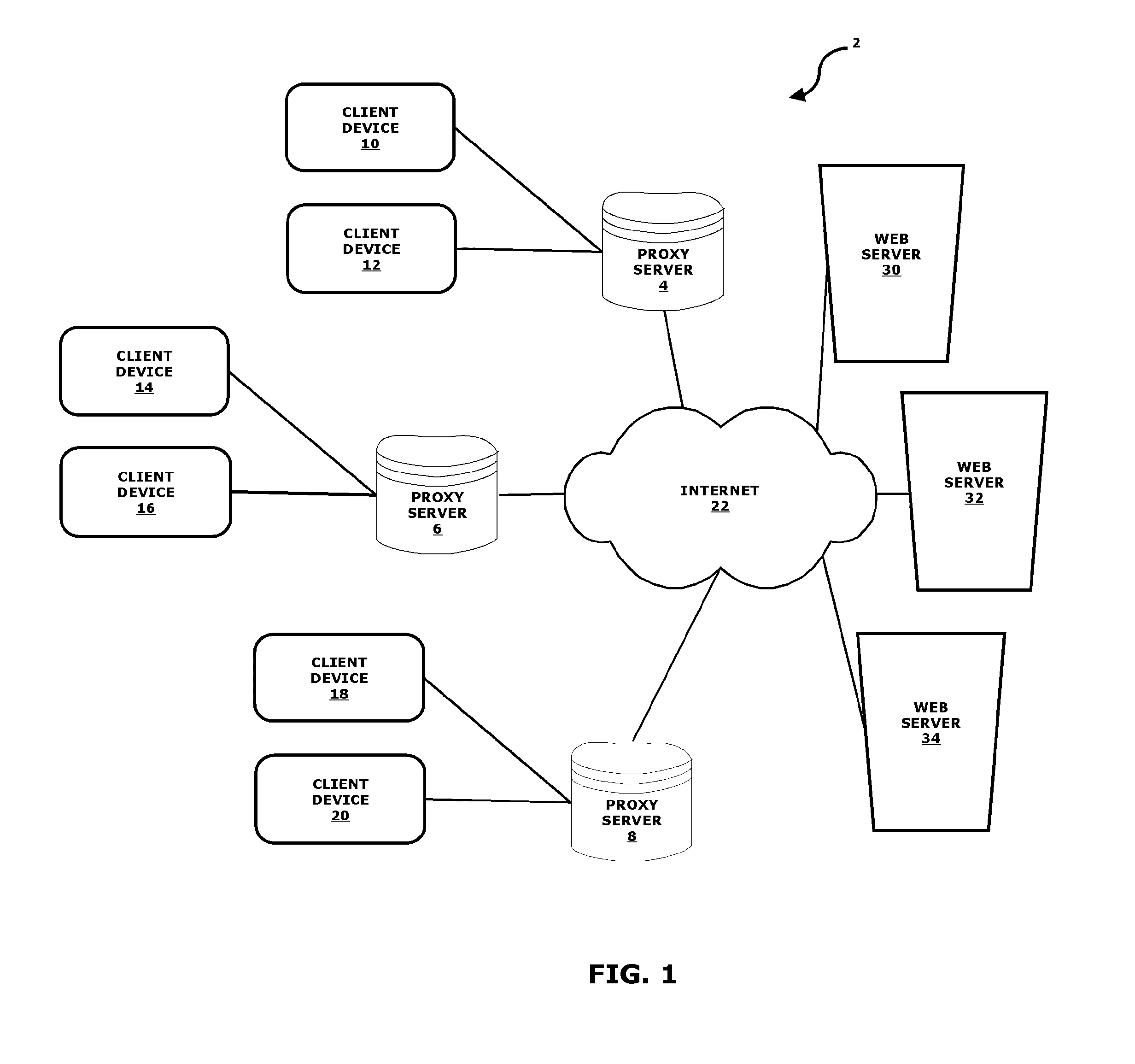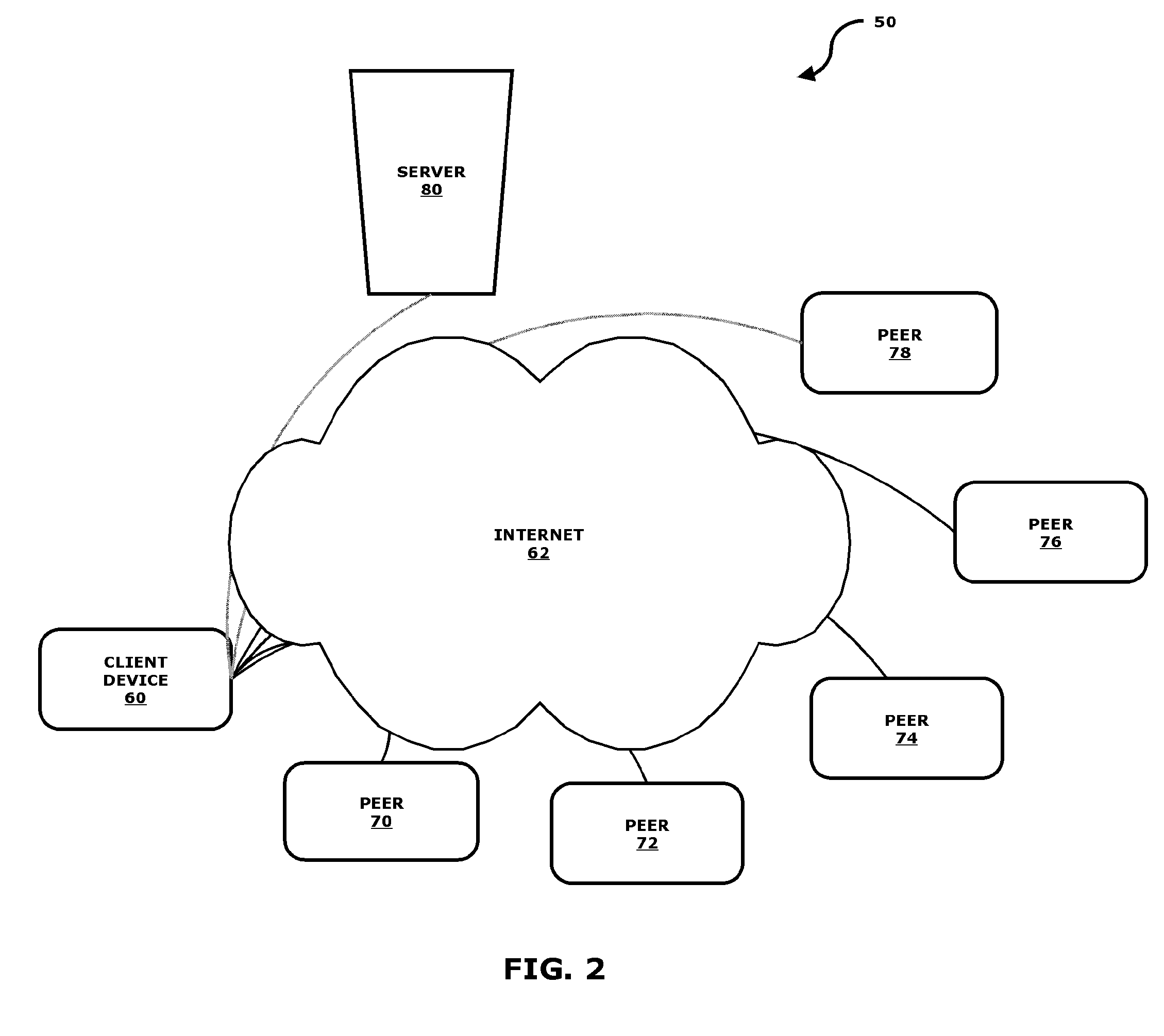System and method for providing faster and more efficient data communication
a data communication and data technology, applied in the field of internet communication, can solve the problems of increasing bandwidth consumption, increasing congestion, and insufficient current internet bandwidth, and achieve the effect of faster and more efficient data communication
- Summary
- Abstract
- Description
- Claims
- Application Information
AI Technical Summary
Benefits of technology
Problems solved by technology
Method used
Image
Examples
Embodiment Construction
[0032]The present system and method provides for faster and more efficient data communication within a communication network. An example of such a communication network 100 is provided by the schematic diagram of FIG. 3. The network 100 of FIG. 3 contains multiple communication devices. Due to functionality provided by software stored within each communication device, which may be the same in each communication device, each communication device may serve as a client, peer, or agent, depending upon requirements of the network 100, as is described in detail herein. It should be noted that a detailed description of a communication device is provided with regard to the description of FIG. 4.
[0033]Returning to FIG. 3, the exemplary embodiment of the network 100 illustrates that one of the communication devices is functioning as a client 102. The client 102 is capable of communication with one or more peers 112, 114, 116 and one or more agents 122. For exemplary purposes, the network cont...
PUM
 Login to View More
Login to View More Abstract
Description
Claims
Application Information
 Login to View More
Login to View More - R&D
- Intellectual Property
- Life Sciences
- Materials
- Tech Scout
- Unparalleled Data Quality
- Higher Quality Content
- 60% Fewer Hallucinations
Browse by: Latest US Patents, China's latest patents, Technical Efficacy Thesaurus, Application Domain, Technology Topic, Popular Technical Reports.
© 2025 PatSnap. All rights reserved.Legal|Privacy policy|Modern Slavery Act Transparency Statement|Sitemap|About US| Contact US: help@patsnap.com



